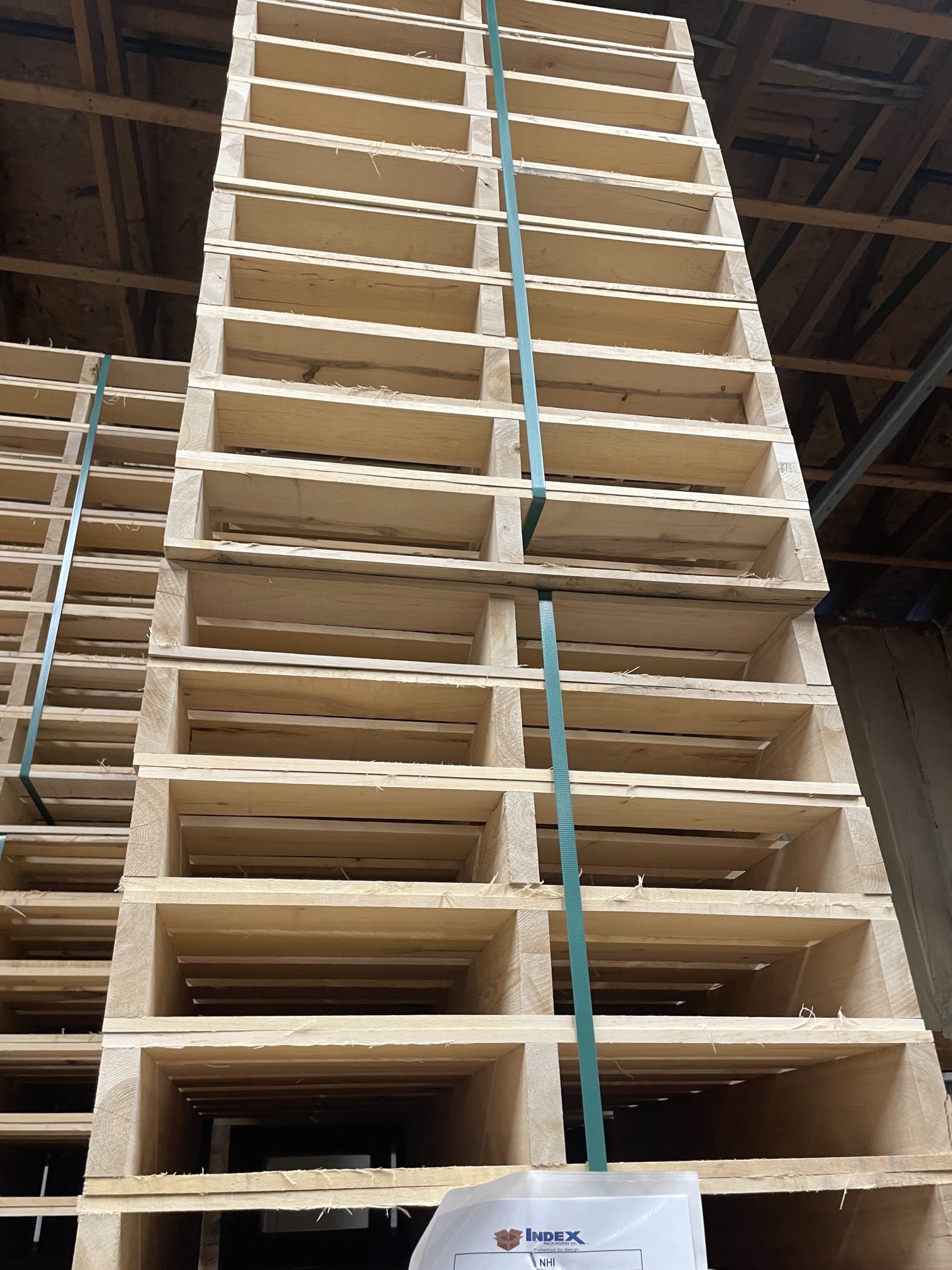Breaking Down Palletization: The Principles of Storage Solutions

In today’s today's fast-paced world of supply chain management, efficiency is crucial to maintaining a competitive edge. One of the overlooked assets in this field is the wooden pallet, a simple yet innovative tool that has changed the way goods are transported and kept. Pallets not just facilitate the movement of products from one location to the next, but also allow businesses to enhance their storage capabilities, making them an essential component in warehouse management.
As we dig deeper into the mechanics of palletization, it becomes evident how these robust platforms help simplify processes and boost overall productivity. From optimizing facility designs to ensuring more secure handling of goods, wooden pallets offer a multi-functional option that meets the demands of various industries. Grasping the role of pallets in logistics can empower businesses to improve their storage solutions and drive operational excellence.

Understanding Wooden Pallets
Wooden pallets are vital tools in the realm of logistics and storage. Constructed from sturdy timber, they provide a solid foundation for transporting a diverse assortment of goods. Their construction enables easy handling and stacking, making them a preferred choice for manufacturers, wholesalers, and retailers alike. The natural strength of wood, combined with its relatively low cost, contributes to the popularity of timber pallets in various industries.
One of the primary advantages of timber pallets is their flexibility. They can support different weight capacities, accommodating everything from lightweight products to heavy machinery. This flexibility allows businesses to enhance their storage space and streamline their operations. Moreover, timber pallets are often reusable, contributing to eco-friendliness efforts by reducing waste and providing an eco-friendly option for shipping and storage.
In addition to utility, timber pallets also offer personalization options. Businesses can choose from multiple designs, sizes, and finishes to meet their unique needs. This customization ensures that wooden pallets can accommodate various types of goods while maintaining their structural integrity. Overall, timber pallets serve as a key element in improving efficiency and organization within supply chain management.
Benefits of Using Pallets
Palletization significantly enhances the efficiency of shipping goods. Through the use of wooden pallets, products can be stacked securely, allowing for more items to be shipped at once. This efficient use of space leads to lower transportation costs, as trucks and containers can be filled more thoroughly. As a result, companies can manage their logistics more effectively, ensuring timely delivery while cutting down on wasted resources.
In addition to transportation benefits, palletization also optimizes storage methods. Wooden pallets create a uniform space for storage, making it more convenient to organize and access products. Warehouses can take advantage of vertical space more effectively, placing goods at different heights without risk of harm. This organized storage not solely improves inventory management but also aids in cutting down on time spent searching for items, in the end enhancing operational productivity.
Furthermore, the use of wooden pallets leads to better safety in storage and transport. Offering a stable base for goods, pallets reduce the risk of damage during manipulation and transfer. Pallets also promote safer stacking methods, reducing the chances of accidents in warehouses and during shipping. pallets in tulsa on safety not only safeguards the goods but also protects the well-being of employees involved in the logistics process.
Best Practices for Storage
To secure the safe use of wooden pallets in storage, it is crucial to pile them in an organized manner. When arranging pallets, set the heaviest items on the bottom and lighter items on top to provide stability. Ensure that the weight is uniformly distributed across the pallets to avoid tipping. Additionally, refrain from overloading pallets beyond their weight capacity, as this can lead to breakage and dangers.
Ensuring a clean storage area is key for prolonging the life of wooden pallets. Regularly inspect the pallets for any signs of wear and tear, such as breaking or fungal growth. Maintaining the storage area free from humidity, dust, and debris not only safeguards the pallets but also enhances overall safety. Adopting proper cleaning protocols will also avert contamination of goods stored on the pallets.
Lastly, consider implementing an organized inventory management system in conjunction with your palletized storage. Label pallets clearly and use a first in, first out approach to ensure that older stock is sold or used before recent goods. This method not only assists with managing inventory well but also minimizes waste and spoilage, ultimately making the best use of the use of both pallets and storage space.
